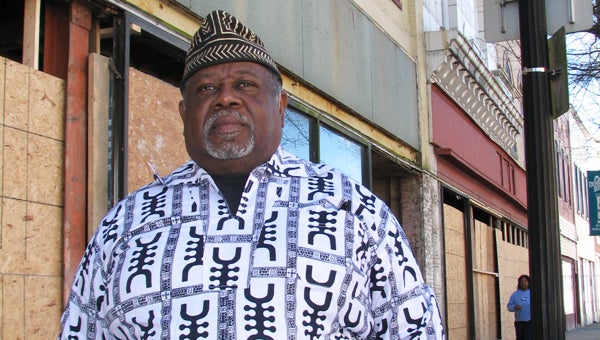Protestors recall sit-ins in Suffolk
Published 11:46 pm Saturday, February 22, 2014

Isaac Baker in front of the former F.W. Woolworth store on West Washington Street, where sit-in protests took place during the 1960s. (Tracy Agnew/Suffolk News-Herald)
‘How times have changed’
Black History Month is an appropriate time to remember the moments when people fought to obtain the freedoms everyone enjoys now.
Isaac Baker, who grew up in Suffolk, remembers when Suffolk was segregated in almost every aspect of life.
On the east side of the railroad tracks that cross East Washington Street at Hall Avenue, black customers could walk in the front door of businesses and be served because, in fact, many of those businesses were owned by blacks themselves.
Baker calls it “Black Wall Street.”
“We had our own funeral home, furniture store, doctors, dentists, banks, theater,” Baker said recently standing near the tracks.
On the other side of the tracks, most of the businesses were duplicated. They were the ones owned by whites, and most of them did not allow black customers in the front door, if at all.
Baker recalls the old Crystal Restaurant at 116 W. Washington St. The building still has a cross on the front, which strikes Baker as a contradiction.
“They didn’t allow blacks in the front door, and they didn’t serve blacks in the front,” he said.
Black customers had to go around back and get their food from the back door near the garbage cans, Baker said.
Baker was among many protestors led by J. Rayfield Vines Jr., who was arrested in February 1960 on a pile of charges, including parading without a permit, unlawful group gathering, leading a mob, inciting a riot, holding a public meeting on city property without permission from the city manager and “integrating a segregated establishment.”
The protestors led sit-ins at F.W. Woolworth and other local businesses that wouldn’t serve blacks. Some whites joined in.
Woolworth became the first to capitulate when — although a small victory — the store removed all the chairs from its lunch counter and served everyone standing up. Diners may have been uncomfortable, but at least they were equal.
“They wouldn’t serve us, but we sat there until we finally broke the ice, and they served us,” Baker said. “My, how times have changed.”
That same year, Ron Hart graduated from Suffolk’s Booker T. Washington High School and went off to North Carolina A&T University, which was on the precipice of sparking great social change.
Some of the first college sit-ins took place in Greensboro and were led by A&T students. The famous Greensboro Four — Joseph McNeil, Franklin McCain, Ezell Blair Jr. and David Richmond — on Feb. 1, 1960, started a snowball of protests that involved more than 1,000 students — black and white, men and women — by the end of that week, according to www.sitinmovement.org.
The next week, media coverage had spread the movement to lunch counters in the rest of the state, with other Southern states following by the end of the month. By the end of July, the two Greensboro lunch counters targeted by the students — at F.W. Woolworth and Kress — were desegregated. The protests sparked swim-ins at segregated pools, read-ins at segregated libraries and more.
Hart was among many who went to jail over the sit-ins after he protested at cafeterias and movie theaters. He stayed behind bars for three or four days.
“They jailed so many of us they had to postpone classes at A&T for a while,” said Hart, now director of the Metropolitan Church Federal Credit Union.
Eventually, Hart saw the desegregation of society.
“It feels good to know you were a part of it and you had some role in bringing togetherness,” he said. “And it wasn’t just an all-black demonstration. It was a mixture of blacks and whites coming together to try to get businesses to do what was right.”






